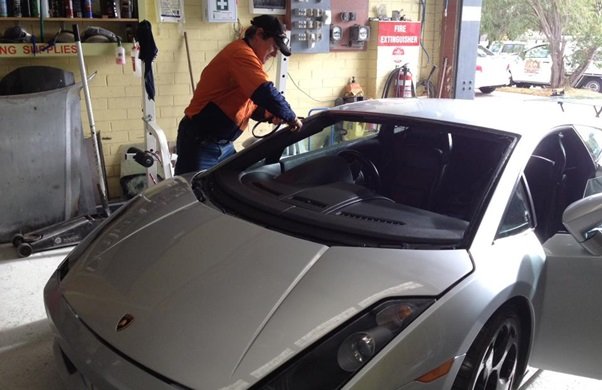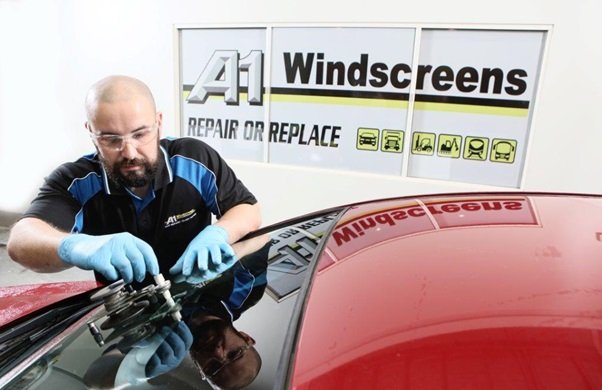Auto Glass Repair vs. Replacement: The Greener Option
We frequently take our cars' windows and windscreens for granted—until they sustain damage. The integrity of car glass is a must in Australia, a continent renowned for its untamed landscapes and erratic weather. However, the automatic response to a crack is typically a replacement. Let's examine the reasons why fixing car glass benefits the environment, your pocketbook, and society at large.
Recognising the Environmental Effects of Auto Glass
Glass for cars has a significant role in the environmental story. The energy-intensive process of making glass greatly increases carbon emissions. Furthermore, it takes millennia for it to break down after disposal. Every glass piece kept out of landfills is a win for Australia's efforts to fight climate change.
The Significance of Repairing in Australia
Auto glass repair exemplifies the "reduce, reuse, recycle" philosophy that is widely accepted in Australia. In addition to protecting natural resources, Australians who opt to fix their glass are also helping out local companies and lessening the environmental impact of producing new glass.
How Glass for Vehicles is Made?
Safety glass, often known as auto glass, is an engineering marvel. It is produced using a technique known as "float glass production," which entails quickly cooling raw materials after they have been melted at high temperatures. This energy-intensive process uses a lot of natural gas and electricity and releases greenhouse gases, which is problematic for a nation that is fighting bushfires and looking for sustainable solutions
The Energy-Intensive Windscreen Manufacturing Process
Making car windscreens takes a lot of energy from beginning to end, much like running a marathon. The glass sector in Australia still uses a lot of non-renewable resources, despite the country's efforts for renewable energy. This dependence puts strain on the environment, emphasising the necessity for alternatives like fixing broken windscreen wherever it can be done.
Landfill Space and Windscreen Disposal's Effects on the Environment
Consider landfills as the last destination for waste that has been unable to find another use. Windscreens that end up here do more than just take up space; as other debris breaks down nearby, it also helps produce methane. Maximising landfill life is essential in a nation with plenty of space but limited capacity. By extending its lifespan, windscreen repair lessens the requirement for this last, unwanted location.
Advantages of Windscreen Repair
There are several environmental advantages to opting to repair auto glass. We explore the several ways that one straightforward choice can support preservation, energy efficiency, and much more in this section.
- Preservation of Resources: Windscreen repair for vehicles is a creative activity. We can save the energy and materials needed to create a new piece by repairing a chip or crack. This conservation is important in a time when sustainability has become more than just a catchphrase but a need.
- Cutting Down on Energy Use: Saving energy is similar to saving money because it is the monetary equivalent of the manufacturing sector. By lowering the energy required to produce new glass, auto glass repair immediately lowers greenhouse gas emissions.
- Lower Emissions of Greenhouse Gases: In essence, we are reducing our carbon footprint each time we choose repair over replacement. A small action with big effects is lowering the need for new windscreen, which also lowers the emissions related to its manufacture.
- Reducing Waste and Contributions to Landfills: Avoiding the landfill helps avoid pollution in addition to conserving space. Landfills are environmental dangers in addition to being unsightly. By fixing car windscreens, we can reduce our impact on the issue and make sure that we're contributing to the solution rather than the pollution. It's a sensible strategy in an age where survival depends on sustainability.
Replacement vs. Repair: Calculating the Savings for the Environment
About 75% of the electrical power required to make a new windscreen is saved when auto glass is repaired. We're talking about preventing kilogrammes of CO2 from reaching the atmosphere for each repair, which amounts into a substantial decrease in CO2 emissions. These figures pile up over time, demonstrating the real advantages of going with repair.
Innovations Increasing the Durability and Feasibility of Repair
Australia's auto glass repair industry is not stagnant; rather, it is expanding quickly. The idea that something new remains superior has been challenged by technological advancements that have made fixes more resilient and undetectable. Thanks to these developments, fixing the majority of minor damages is not only a wise decision but also an environmentally responsible one.
Australian Research and Development's Function
Australia's dedication to innovation is seen in the way it handles auto glass repair. Repair methods have advanced thanks in large part to local development and research initiatives, which have increased their efficacy and accessibility. This indigenous invention demonstrates that major changes frequently begin with tiny cracks and reflects Australia's position as an example in sustainable techniques.
Typical Myths Regarding Windscreen Repair
Many people think that a windscreen that has been mended is compromised. It's a myth. A mended windscreen is still a safer alternative to leaving it unfixed, even though its strength will never match that of the original windscreen. It will take education, showcasing the resilience and soundness of the mended windscreen, and demonstrating rather than telling to dispel this myth.
Resolving Issues with Safety and Quality
It makes sense that car glass safety is of the utmost importance. The bright side is that, because of careful inspection and superior control procedures, mended glass satisfies all safety requirements. The difficulty is in properly conveying this information so that drivers know that having windscreen repaired is not only safe but also wise.
Overcoming Regulatory and Economic Obstacles
There are obstacles in the way of glass restoration becoming commonplace. More stringent waste disposal laws and financial incentives for recycling can be beneficial. More crucially, though, is cultivating a culture that values repair over replacement. This change calls for both public support and policy backing, which Australia has proved more than able to provide.
How You Can Change Things?
- Selecting Repair: Essential Information
Making the decision to get your car's windscreen repaired makes a strong impression. It demonstrates your dedication to sustainability, local business support, and environmentally friendly decision-making. Do your research before making a decision. Recognise the steps involved, the advantages, and the consequences of your decision.
- Promoting Sustainable Traditions in Your Neighbourhood
One voice often initiates change. You're not just increasing awareness but also igniting action in your community by supporting eco-friendly activities like auto glass repair. Your advocacy can inspire people to adopt eco-friendly decisions, whether it be through social media, neighbourhood gatherings, or casual discussions.
- Supporting Laws That Promote Repair Rather Than Replacement
Supporting laws that prioritise restoration over replacement is essential on a larger scale. Voting for initiatives that promote sustainability or taking part in neighbourhood environmental projects are only two ways to show your support for these causes. Policymakers are more inclined to take action when they perceive a need for sustainable solutions, which has a positive knock-on effect for all.
About the Author: Darren Pay and Justin Oakes co-own A1 Windscreen, Australia. The company is known for providing excellent services like recalibrating adas solutions and offering durable car window tinting services.


